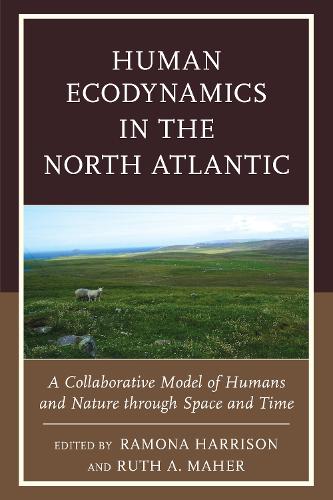
Human Ecodynamics in the North Atlantic: A Collaborative Model of Humans and Nature through Space and Time
(Hardback)
Publishing Details
Human Ecodynamics in the North Atlantic: A Collaborative Model of Humans and Nature through Space and Time
By (Author) Ramona Harrison
Edited by Ruth A. Maher
Contributions by Colin Amundsen
Contributions by Julie M. Bond
Contributions by Stephen J. Dockrill
Contributions by Andrew J. Dugmore
Contributions by Julie Gibson
Contributions by Ramona Harrison
Contributions by Megan Hicks
Contributions by Aaron Kendall
Bloomsbury Publishing PLC
Lexington Books
8th October 2014
United States
Classifications
Professional and Scholarly
Non Fiction
304.20948
Physical Properties
Hardback
252
Width 161mm, Height 237mm, Spine 23mm
499g
Description
In Human Ecodynamics in the North Atlantic: A Collaborative Model of Humans and Nature through Space and Time, Ramona Harrison and Ruth A. Maher have compiled a series of separate research projects conducted across the North Atlantic region that each contribute greatly to anthropological archaeology. This book assembles a regional model through which the reader is presented with a vivid and detailed image of the climatic events and cultures which have occupied these seas and lands for roughly a 5000-year period. It provides a model of adaptability, resilience, and sustainability that can be applied globally. First, visiting the Northern Isles of Scotland in the Orkney Islands, the reader is taken through the archaeology from the Neolithic Period through World War II in the face of sea-level rise and rapidly eroding coastlines. The Shetland Islands then reveal a deep-time study of one large-scale Iron Age excavation. On to the northern coasts of Norway, where information about late medieval maritime peoples is explained. Iceland explores humanenvironment interaction and implications of climate change presented from the Viking Age through the Early Modern Era. Rounding out the North Atlantic Region is Greenland, which sheds light on the Norse in the late Viking Age and the Middle Ages.
Reviews
A human force of nature. Spanning the North Atlantic from the Viking Iron Age to the nineteenth century, the authors navigate a two-way street of interaction between humans and their environment that highlights both the successes and missteps along the way. -- Christyann Darwent, editor of Arctic Anthropology
A remarkable demonstration of the value of close collaboration in interdisciplinary thinking. The human ecodynamics approach of the authors brings together archaeologists, environmental historians, and paleoecologists to provide new theoretical insights and solid scientific evidence to make real-world decisions. As the evidence of the potential threat of climate change continues to accumulate, the authors of this volume take a comprehensive approach to understanding past societies in the North Atlantic region and their relationship to the landscapes and seascapes surrounding them. They ask the question, what can we learn from the past Being at the climatic extreme of human settlement and a region hyper-sensitive to variations in climate, the experiences and responses of these people may prove to be the canary in the coal mine for all of us interested in how to best face climate change in the future. -- Charles Redman, Arizona State University
Author Bio
Ramona Harrison is associate professor at the University of Bergen, Norway and research associate at Hunter College, CUNY. Ruth A. Maher is HSS research coordinator and adjunct professor of archaeology at William Paterson University.
